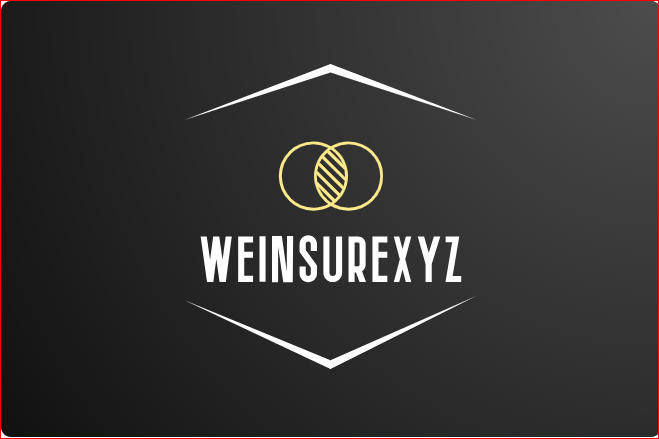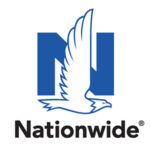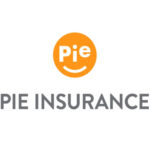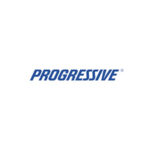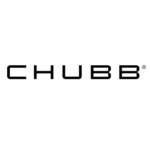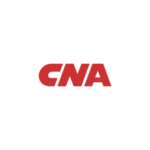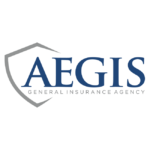How to find the Best Affordable Small Business Insurance Coverage in New York?
Practical insights for small business owners seeking affordable small business insurance solutions that align with their budget constraints. Amidst the myriad responsibilities, one crucial element often causes  entrepreneurs to break into a sweat – securing F. Running a small business is an intricate dance between ambition and financial prudence.
entrepreneurs to break into a sweat – securing F. Running a small business is an intricate dance between ambition and financial prudence.
Section 1: Understanding the Small Business Landscape
Running a small business is a journey filled with ambition, innovation, and the constant juggling of responsibilities. However, beneath the surface, small business owners face a unique set of challenges that significantly impact their insurance needs. Let’s delve into these challenges to understand why finding affordable small business insurance coverage is not just a matter of choice but a crucial necessity for the survival and growth of small enterprises.
1. Limited Budgets:
Small businesses often operate on tight budgets, allocating resources judiciously to keep the wheels turning. The challenge here lies in finding affordable small business insurance coverage that provides adequate protection without imposing an unbearable financial burden. Striking this delicate balance is vital for ensuring the sustainability of the business.
2. Diverse Risks:
Unlike larger corporations with specialized departments, small business owners often wear multiple hats. This versatility is a strength, but it also means they face a broad spectrum of risks. From property damage to liability claims and everything in between, small businesses need comprehensive coverage that addresses their diverse risk landscape.
3. Lack of In-House Expertise:
Large corporations often have dedicated risk management and legal teams to navigate the complexities of insurance. In contrast, small businesses may lack in-house expertise, making it challenging to decipher intricate insurance policies. This knowledge gap can lead to inadequate small business insurance coverage or even paying for unnecessary features.
4. Dynamic Business Environment:
Small businesses are dynamic entities that can experience rapid changes in size, structure, or operations. These fluctuations pose challenges when it comes to maintaining appropriate insurance coverage. An insurance policy that suits a small business during its initial stages might become insufficient as the business evolves.
5. Regulatory Compliance:
Navigating the maze of insurance regulations can be daunting for small business owners. Different industries may have specific compliance requirements, and failure to adhere to these regulations can result in legal consequences. Small businesses need affordable small business insurance coverage that not only protects them from risks but also keeps them in compliance with relevant laws and regulations.
6. Vulnerability to Economic Shifts:
Small businesses are often more susceptible to economic downturns. When financial constraints tighten, insurance may be viewed as an expendable cost, leading to potential coverage gaps. Finding affordable small business insurance that remains a priority even during challenging economic times is crucial for the long-term viability of small enterprises.
7. Personal and Business Interconnectedness:
In many small businesses, personal and business assets are closely intertwined. This interconnectedness poses a unique challenge when it comes to affordable small business insurance. Small business owners need affordable small business insurance coverage that safeguards both their personal and business interests without creating unnecessary complications.
8. Limited Employee Benefits:
Attracting and retaining talent is essential for small businesses, but offering competitive employee benefits, including health insurance, can be financially challenging. Balancing the need for comprehensive coverage with the affordability of employee benefits is a delicate task for small business owners.
Understanding these challenges is the first step towards finding tailored affordable small business insurance solutions that cater to the specific needs and limitations of small businesses. In the following sections, we will explore strategies and approaches to overcome these challenges and secure cost-effective insurance coverage.
Section 2: Assessing Risks: The Foundation of Smart Affordable Small Business Insurance Choices
In the intricate world of small business management, one cornerstone stands tall – risk assessment. It serves as the compass guiding small business owners through the tumultuous seas of uncertainties. Understanding the importance of risk assessment not only helps in safeguarding the business’s survival but also forms the bedrock for making informed decisions when it comes to choosing the right affordable small business insurance coverage.
1. Identifying Potential Threats:
- Risk assessment involves a systematic evaluation of potential threats and vulnerabilities that could impact a small business. These threats may include but are not limited to, property damage, liability issues, employee-related risks, and external factors like economic shifts.
2. Customizing Small Affordable Small Business Insurance Needs:
- Each small business is unique, with its own set of operations, assets, and challenges. Risk assessment allows business owners to tailor their insurance coverage to match their specific needs. Instead of opting for a one-size-fits-all approach, small businesses can focus on the risks that are most pertinent to their operations.
3. Cost-Efficient Resource Allocation:
- Resources, particularly financial ones, are often scarce for small businesses. Risk assessment helps in prioritizing where to allocate resources, ensuring that the most critical risks are adequately addressed. This targeted approach not only enhances risk management effectiveness but also contributes to cost efficiency.
4. Mitigating Potential Losses:
- By identifying and assessing risks, small business owners can implement strategies to mitigate potential losses. This proactive approach reduces the likelihood and severity of negative outcomes, ultimately protecting the business’s assets and financial stability.
5. Compliance and Legal Obligations:
- Many industries have specific legal requirements and regulations related to risk management and insurance. Conducting a thorough risk assessment ensures that the business is compliant with these obligations, mitigating the risk of legal consequences and associated penalties.
6. Understanding Business Interruption Risks:
- Business interruption can be a significant threat to small businesses. Whether due to natural disasters, cyber incidents, or other unforeseen events, interruptions in operations can lead to financial losses. Risk assessment helps in understanding and addressing these business interruption risks, allowing for more comprehensive affordable small business insurance coverage.
7. Evaluating Employee-Related Risks:
- Employees are valuable assets, but they also introduce certain risks. From workplace injuries to employment practices liability, assessing these risks helps in implementing safety programs, ensuring compliance with labor laws, and selecting appropriate insurance coverage, such as workers’ compensation and employment practices liability insurance.
8. Long-Term Strategic Planning:
- Risk assessment is not just about immediate threats; it’s also a crucial component of long-term strategic planning. By understanding the evolving landscape of risks, small business owners can anticipate challenges and adjust their strategies, ensuring the business’s resilience and sustainability.
9. Enhancing Insurability:
- Insurers often assess the level of risk associated with a business when determining premiums and coverage options. Small businesses that conduct thorough risk assessments are perceived as lower risks by insurers, potentially leading to more favorable insurance terms and premiums.
10. Proactive Decision-Making:
- Ultimately, risk assessment empowers small business owners to make proactive, informed decisions. Instead of reacting to crises, they can implement preventive measures and select affordable small business insurance coverage that aligns with their risk tolerance and business objectives.
In the subsequent sections, we will explore how small businesses can leverage risk assessment insights to choose appropriate insurance types, customize affordable small business insurance coverage, and create a resilient risk management strategy.
Section 3: Decoding Insurance Types for Small Businesses
In the intricate world of small business management, understanding the fundamental types of insurance is akin to having a well-constructed toolkit. Each policy serves a specific purpose, offering protection against various risks that could potentially jeopardize the business’s stability. Let’s unravel the key insurance types that small businesses commonly require, emphasizing the critical importance of tailoring coverage to specific needs.
1. General Liability Insurance:
- Overview: General liability insurance is the backbone of small business insurance. It provides coverage for third-party claims related to bodily injury, property damage, and personal and advertising injury.
- Importance: Tailoring general liability coverage involves understanding the specific risks associated with the business’s operations. For example, a retail store might face different liabilities than a consulting firm, and the policy needs to reflect those distinctions.
2. Property Insurance:
- Overview: Property insurance safeguards physical assets such as buildings, equipment, inventory, and other property from risks like fire, theft, vandalism, or natural disasters.
- Importance: Small businesses must assess the value of their physical assets and the potential risks they face. Tailoring property insurance involves accurately valuing assets and selecting coverage that adequately protects against identified risks.
3. Workers’ Compensation Insurance:
- Overview: Workers’ compensation insurance is a legal requirement in many places, providing coverage for employee injuries or illnesses sustained in the course of employment.
- Importance: Tailoring workers’ compensation involves understanding the specific risks associated with the industry and workplace. This includes assessing the potential for workplace injuries and complying with state regulations.
4. Business Owner’s Policy (BOP):
- Overview: A Business Owner’s Policy combines general liability and property insurance into a single, cost-effective package designed for small businesses.
- Importance: Tailoring a BOP involves customizing coverage limits and additional endorsements based on the unique risks faced by the business. This streamlined approach ensures comprehensive protection without unnecessary costs.
5. Commercial Auto Insurance:
- Overview: Commercial auto insurance covers vehicles used for business purposes against accidents, damages, and liabilities.
- Importance: Tailoring commercial auto insurance involves accurately listing and valuing business vehicles, considering the frequency and purpose of use. Special considerations may be needed for businesses with a fleet of vehicles.
6. Professional Liability Insurance:
- Overview: Also known as errors and omissions (E&O) insurance, professional liability insurance protects against claims of negligence or inadequate work.
- Importance: Tailoring professional liability coverage requires a deep understanding of the specific risks associated with the business’s professional services. This could include legal services, consulting, or any profession where errors could lead to financial losses for clients.
7. Cyber Liability Insurance:
- Overview: Cyber liability insurance protects against data breaches, cyber-attacks, and other cyber-related risks.
- Importance: Tailoring cyber liability coverage involves assessing the business’s reliance on technology, the volume of sensitive data handled, and the potential financial impact of a cyber incident.
8. Umbrella Insurance:
- Overview: Umbrella insurance provides additional liability coverage that extends beyond the limits of other primary liability policies.
- Importance: Tailoring umbrella insurance involves evaluating the existing liability coverage and determining the appropriate excess coverage needed to protect the business from catastrophic events that could exceed primary policy limits.
9. Employment Practices Liability Insurance (EPLI):
- Overview: EPLI protects businesses against claims related to employment practices issues such as discrimination, wrongful termination, or harassment.
- Importance: Tailoring EPLI involves considering the business’s industry, employee size, and potential employment-related risks. This coverage is particularly crucial for businesses with employees.
10. Business Interruption Insurance:
- Overview: Business interruption insurance covers lost income and extra expenses during periods when business operations are disrupted due to covered events.
- Importance: Tailoring business interruption coverage requires a thorough understanding of the business’s reliance on specific factors, such as key suppliers, and assessing the potential financial impact of an interruption.
By tailoring coverage to specific needs, small businesses can ensure that their insurance portfolio is not only comprehensive but also cost-effective. This approach involves a careful analysis of the business’s unique risks, operations, and industry dynamics. In the subsequent sections, we will explore strategies for optimizing coverage, managing costs, and ensuring that small businesses are well-equipped to face the uncertainties of the business landscape.
Section 4: The Power of Bundling: A Cost-Effective Approach
In the complex world of small business insurance, efficiency and affordability are paramount. Enter the strategic approach of bundling insurance policies – a powerful tool that enables small businesses to consolidate their coverage needs under a single umbrella. Let’s explore the benefits of bundling policies and how this approach can lead to both financial savings and operational efficiency.
1. Consolidated Coverage:
- Benefit: One of the primary advantages of bundling policies is the consolidation of coverage. Instead of managing multiple individual policies for general liability, property, and other insurable risks, small businesses can bundle these coverages into a single, streamlined package.
- Financial Impact: Consolidation not only simplifies the administrative burden but can often result in cost savings. Insurers may offer discounts for bundling policies, making it a cost-effective solution for small businesses operating on tight budgets.
2. Cost Savings:
- Benefit: Bundling policies can lead to direct cost savings. Insurance providers often incentivize businesses to bundle by offering discounts on premiums when multiple policies are purchased together.
- Financial Impact: Small businesses, particularly those with limited financial resources, can benefit from reduced overall insurance costs. The cumulative discount applied through bundling can contribute to significant savings over individual policy premiums.
3. Time and Resource Efficiency:
- Benefit: Managing insurance policies individually can be time-consuming. Bundling policies simplifies the administrative process by consolidating paperwork, renewals, and communication into a unified framework.
- Operational Impact: Small business owners and their staff can redirect time and resources previously spent on navigating multiple policies toward core business activities. This operational efficiency can enhance productivity and contribute to the business’s overall effectiveness.
4. Enhanced Customization:
- Benefit: Bundling policies allow for a more cohesive and tailored approach to coverage. Small businesses can work with insurers to customize their bundled package to align precisely with their unique risk profile and operational needs.
- Financial Impact: Tailoring affordable small business insurance coverage to specific requirements ensures that the business is neither underinsured nor overinsured. This precision contributes to a more cost-effective insurance strategy.
5. Simplified Claims Process:
- Benefit: When a business bundles its policies, the claims process becomes more streamlined. Dealing with a single insurer for multiple coverages can simplify the claims reporting and settlement procedures.
- Operational Impact: A simplified claims process reduces potential administrative burdens during stressful times. Small business owners can navigate the claims process more efficiently, allowing for a faster return to normal business operations.
6. Comprehensive Risk Management:
- Benefit: Bundling policies encourage a comprehensive approach to risk management. Small businesses can work with insurers to assess their overall risk profile and ensure that all potential vulnerabilities are addressed within the bundled coverage.
- Financial Impact: Comprehensive risk management helps mitigate the potential for coverage gaps, reducing the likelihood of unexpected expenses arising from underinsured risks.
7. Relationship Building with Insurers:
- Benefit: Establishing a long-term relationship with an insurance provider through bundling can be advantageous. Insurers are more likely to invest in understanding the specific needs of a business with which they have a broader relationship.
- Operational Impact: This relationship can lead to better communication, more personalized service, and a deeper understanding of the business’s evolving risk landscape. It fosters a partnership that goes beyond transactional insurance arrangements.
8. Flexibility and Adaptability:
- Benefit: Bundling policies offer flexibility for small businesses as their needs evolve. The bundled approach allows for the addition or adjustment of coverages as the business grows or encounters new risks.
- Operational Impact: Small businesses can adapt their insurance coverage to changing circumstances without the hassle of negotiating and managing entirely new policies. This adaptability is crucial for businesses navigating dynamic market conditions.
In summary, the benefits of bundling policies extend beyond mere cost savings. Small businesses can enjoy operational efficiencies, a streamlined approach to risk management, and the flexibility to adapt their coverage as their needs evolve. The bundled approach serves as a strategic tool for small business owners seeking comprehensive and cost-effective solutions to navigate the complexities of the insurance landscape.
Section 5: Business Owner’s Policy (BOP): Tailored Coverage for Small Enterprises
In the realm of small business insurance, where efficiency and comprehensive coverage are paramount, the Business Owner’s Policy (BOP) emerges as a strategic and cost-effective solution. Let’s delve into the concept of the BOP, understanding how it serves as a tailored insurance package specifically designed to meet the unique needs of small businesses.
1. Definition and Components of a BOP:
- Concept: A Business Owner’s Policy (BOP) is a specialized insurance package that combines multiple coverages into a single, integrated policy. It is crafted to cater specifically to the needs of small and medium-sized enterprises (SMEs).
- Components: The core components of a BOP typically include general liability insurance, property insurance, and often business interruption insurance. Some policies may also offer additional coverages or allow for customization based on the business’s unique risks.
2. General Liability Coverage:
- Inclusion: One of the primary components of a BOP is general liability coverage. This protects small businesses against third-party claims for bodily injury, property damage, or personal and advertising injury.
- Importance: General liability coverage is foundational, providing a safety net for common risks faced by businesses, such as customer injuries on the premises or allegations of defamation.
3. Property Insurance Protection:
- Inclusion: BOPs incorporate property insurance to safeguard a business’s physical assets, including buildings, equipment, inventory, and other tangible property, against perils such as fire, theft, vandalism, or certain natural disasters.
- Significance: Property insurance within a BOP ensures that a small business can recover financially from property-related losses, preserving the continuity of operations.
4. Business Interruption Insurance:
- Inclusion: Many BOPs include business interruption insurance, which compensates businesses for lost income and extra expenses incurred during periods of suspended operations due to covered perils.
- Critical Role: Business interruption coverage in a BOP plays a vital role in helping small businesses weather the financial storms that may arise from unexpected disruptions, such as a fire or natural disaster.
5. Customization for Specific Needs:
- Flexibility: While BOPs come with standard coverages, they also offer flexibility. Small business owners can often customize their BOP by adding additional coverages or adjusting limits to align with their specific risks and operations.
- Tailoring: This customization allows small businesses to tailor their insurance package precisely to their needs, ensuring that they are not overinsured in areas where they face lower risks or underinsured in critical areas.
6. Cost-Effective Solution:
- Affordability: BOPs are designed to be cost-effective for small businesses. The bundling of coverages into a single policy often results in lower premiums compared to purchasing each coverage separately.
- Economic Advantage: The cost-effectiveness of BOPs makes them particularly advantageous for small businesses operating on limited budgets. It provides a comprehensive solution without straining financial resources.
7. Streamlined Administration:
- Simplicity: BOPs simplify the administrative aspects of insurance management. Instead of juggling multiple policies with different renewal dates and administrative requirements, small businesses can streamline their insurance administration under a single BOP.
- Time and Resource Savings: This streamlined approach saves small business owners time and resources, allowing them to focus on core business activities rather than navigating the complexities of managing multiple insurance policies.
8. Risk Management Guidance:
- Expertise: Insurers providing BOPs often offer risk management guidance tailored to small businesses. This includes recommendations on safety measures, loss prevention strategies, and other proactive steps to reduce risks.
- Value-Added Service: The inclusion of risk management support adds value to the BOP, empowering small business owners with insights to enhance their overall risk management practices.
9. Coverage for Common Risks:
- Holistic Protection: BOPs are crafted to provide holistic protection against common risks faced by small businesses. By addressing multiple facets of risk – from liability concerns to property protection – BOPs offer a well-rounded solution for comprehensive coverage.
- Versatility: The versatility of a BOP makes it an ideal choice for a diverse range of small businesses across various industries.
10. Scalability for Growth:
- Adaptability: BOPs are scalable and can adapt to the changing needs of a growing small business. As a business expands, the coverage limits and components within the BOP can be adjusted to accommodate the evolving risk landscape.
- Long-Term Solution: This scalability ensures that the BOP remains a relevant and effective affordable small business insurance solution throughout different stages of a small business’s growth trajectory.
In conclusion, the Business Owner’s Policy (BOP) stands out as a tailored, cost-effective, and comprehensive affordable small business insurance solution for small businesses. By bundling essential coverages into a single, streamlined policy, BOPs provide small business owners with the financial protection and operational simplicity needed to navigate the complexities of the business landscape.
Let us help you bind an affordable small business insurance:
- Business Liability Insurance Package Policy. Often referred to as a Business Owner Policy or “BOP,” this General Liability package policy protects your company in the event a client is injured on your premises, or if you or one of your employees causes an injury or property damage at a client’s location. Learn more…
- Professional Liability Insurance. Professional Liability or “Errors & Omissions” Insurance provides coverage in the event you are legally obligated to pay for economic damages to your client or a third party allegedly caused by your negligence, error, or omission in the performance of your professional services. Learn more…
- Workers’ Compensation Insurance. Required in many states, Workers’ Compensation Insurance provides medical and disability coverage for company employees in the event of a work-related illness or injury. Learn more…
- Employment Practices Liability Insurance. EPLI insurance provides the protection you need should one of your employees allege any number of employment practice violations. These violations include age, race, or gender discrimination, wrongful termination, and sexual harassment. EPLI is essential coverage for today’s small service business. Learn more…
- Umbrella Liability Insurance. Umbrella or “Excess Liability” Insurance provides you with an extra layer of protection in the event you have large or multiple claims that exceed your General Liability, Commercial Auto or Employment Practices Liability policies. Learn more…
WeInsureXYZ provides instant access to a complete package to provide you with accurate insurance information and access to quality insurance products, quickly and securely. Let us help you create a comprehensive insurance solution that fits your needs and your budget.
Don’t wait! Get the protection you need for your small business today.
